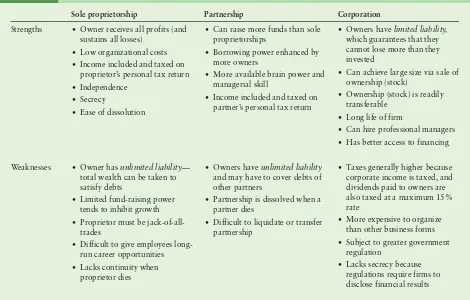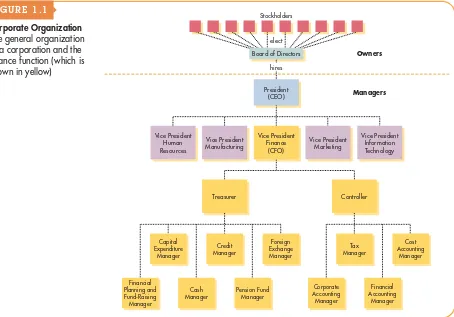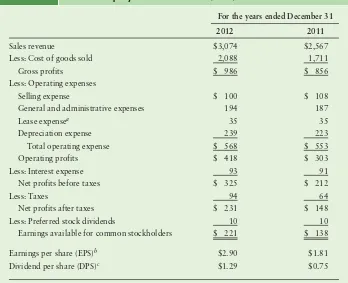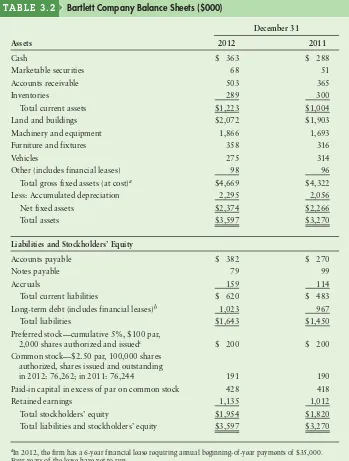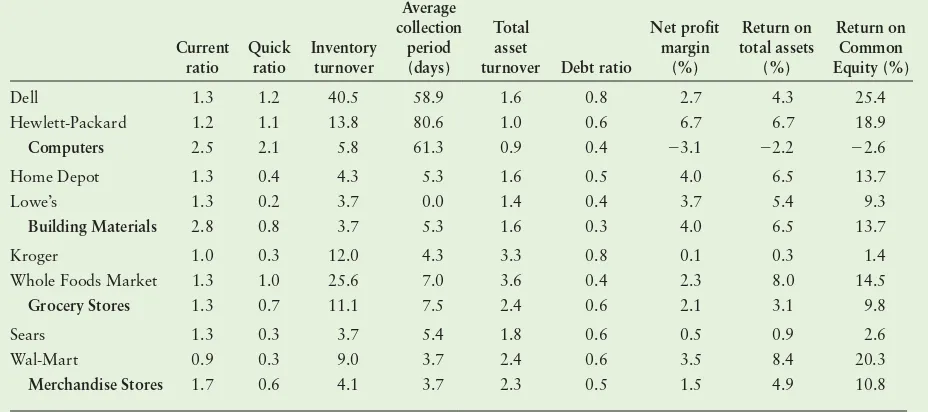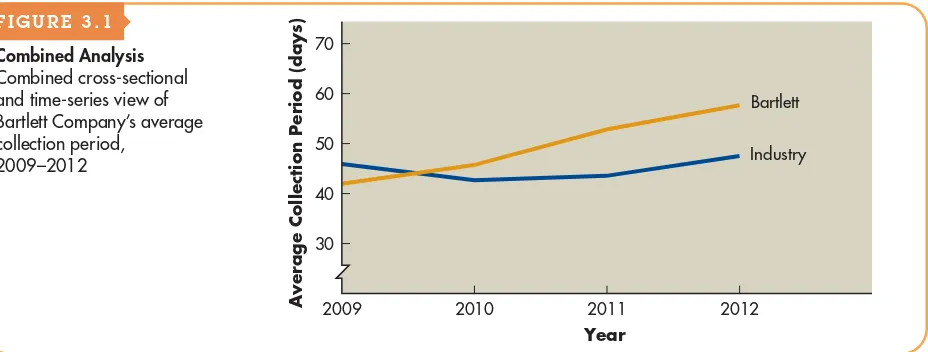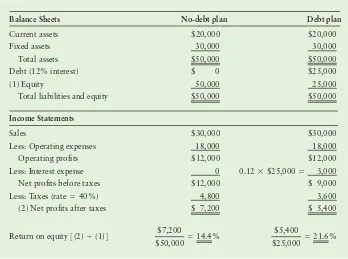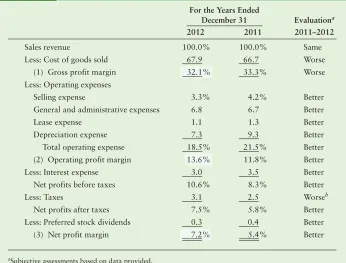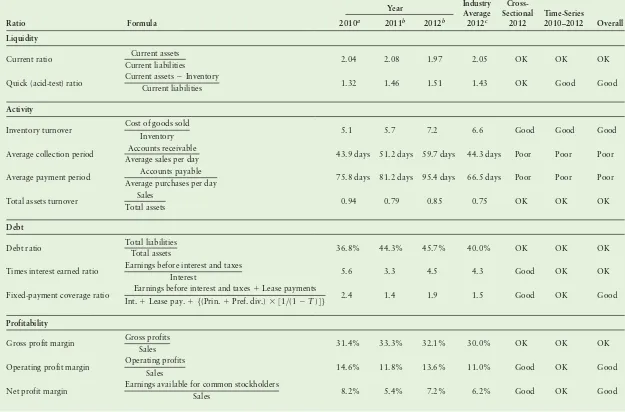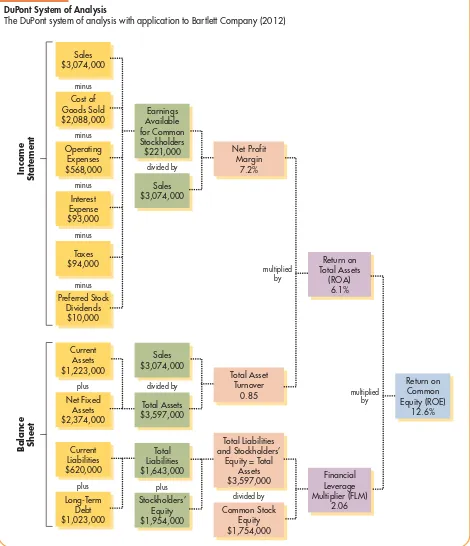Adelman/Marks
Entrepreneurial Finance Andersen
Global Derivatives: A Strategic Risk Management Perspective
Introduction to Risk Management and Insurance
Eiteman/Stonehill/Moffett Multinational Business Finance Fabozzi
Bond Markets: Analysis and Strategies Fabozzi/Modigliani
Capital Markets: Institutions and Instruments
Fabozzi/Modigliani/Jones/Ferri Foundations of Financial Markets and Institutions
The Inefficient Stock Market: What Pays Off and Why
Haugen
The New Finance: Overreaction, Complexity, and Uniqueness Holden
Excel Modeling and Estimation in Corporate Finance
Holden
Excel Modeling and Estimation in Investments
Hughes/MacDonald
International Banking: Text and Cases Hull
Fundamentals of Futures and Options Markets
Personal Finance: Turning Money into Wealth*
Keown/Martin/Petty
Foundations of Finance: The Logic and Practice of Financial
Risk Takers: Uses and Abuses of Financial Derivatives
Principles of Risk Management and Insurance
Valuation: The Art and Science of Corporate Investment Decisions
Lawrence J. Gitman
San Diego State University
Chad J. Zutter
University of Pittsburgh
Prentice Hall
Boston Columbus Indianapolis New York San Francisco Upper Saddle River Amsterdam Cape Town Dubai London Madrid Milan Munich Paris Montreal Toronto
Delhi Mexico City Sao Paulo Sydney Hong Kong Seoul Singapore Taipei Tokyo
Editorial Project Managers: Melissa Pellerano and Kerri McQueen
Managing Editor: Nancy Fenton
Senior Production Project Manager: Nancy Freihofer Supplements Editor: Alison Eusden
Marketing Assistant: Ian Gold Media Producer: Nicole Sackin
MyFinanceLab Content Lead: Miguel Leonarte
Cover Image: Stock4B-RF/Getty Images
Image Permission Coordinator: Rachel Youdelman Photo Researcher: Elizabeth Anderson
Interior Design, Project Coordination, and Composition: Nesbitt Graphics, Inc.
Printer/Binder: R.R. Donnelley, Willard Cover Printer: Lehigh Phoenix
Text Font: 10/12 Sabon
Prentice Hall is an imprint of
Credits and acknowledgments borrowed from other sources and reproduced, with permission, in this textbook appear on appropriate page within text (or on page C1).
Microsoft®and Windows®are registered trademarks of the Microsoft Corporation in the U.S.A. and other countries. Screen shots and icons reprinted with permission from the Microsoft Corporation. This book is not sponsored or endorsed by or affiliated with the Microsoft Corporation.
Copyright © 2012, 2009, 2006, 2003 by Lawrence J. Gitman.
All rights reserved. Manufactured in the United States of America. This publication is protected by Copyright, and permission should be obtained from the publisher prior to any prohibited repro-duction, storage in a retrieval system, or transmission in any form or by any means, electronic, mechanical, photocopying, recording, or likewise. To obtain permission(s) to use material from this work, please submit a written request to Pearson Education, Inc., Rights and Contracts Department, 501 Boylston Street, Suite 900, Boston, MA 02116, fax your request to 617 671-3447, or e-mail at http://www.pearsoned.com/legal/permission.htm.
Many of the designations by manufactures and sellers to distinguish their products are claimed as trademarks. Where those designations appear in this book, and the publisher was aware of a trademark claim, the designations have been printed in initial caps or all caps.
Library of Congress Cataloging-in-Publication Data Gitman, Lawrence J.
Principles of managerial finance/Lawrence J. Gitman, Chad J. Zutter.—13th ed. p. cm.—(The Prentice Hall series in finance)
Includes index.
ISBN 978-0-13-611946-3 (alk. paper)
1. Corporations—Finance. 2. Business enterprises—Finance. I. Zutter, Chad J. II. Title.
HG4011.G52 2010 658.15—dc22
2010044526
who instilled in me the importance of education and hard work.
LJG
Dedicated to my wonderful wife, Heidi Zutter, who unconditionally
vii
Our Proven Teaching
and Learning System
U
sers of Principles of Managerial Financehave praised the effectiveness of the book’s Teaching and Learning System, which they hail as one of its hall-marks. The system, driven by a set of carefully developed learning goals, has been retained and polished in this thirteenth edition. The “walkthrough” on the pages that follow illustrates and describes the key elements of the Teaching and Learning System. We encourage both students and instructors to acquaint them-selves at the start of the semester with the many useful features the book offers.SixLearning Goalsat the start of the
chapter highlight the most important con-cepts and techniques in the chapter. Students are reminded to think about the learning goals while working through the chapter by strategically placed learning goal icons. Every chapter opens with a feature, titled
Why This Chapter Matters to You, that
helps motivate student interest by high-lighting both professional and personal benefits from achieving the chapter learning goals.
Its first part, In Your Professional Life, discusses the intersection of the finance topics covered in the chapter with the con-cerns of other major business disciplines. It encourages students majoring in accounting, information systems, management, mar-keting, and operations to appreciate how financial acumen will help them achieve their professional goals.
The second part, In Your Personal Life, identifies topics in the chapter that will have particular application to personal finance. This feature also helps students appreciate the tasks performed in a busi-ness setting by pointing out that the tasks are not necessarily different from those that are relevant in their personal lives. Why This Chapter Matters to You
In your professionallife
ACCOUNTINGYou need to understand the relationships between the accounting and finance functions within the firm; how decision makers rely on the financial statements you prepare; why maximizing a firm’s value is not the same as maximizing its profits; and the ethical duty that you have when reporting financial results to investors and other stakeholders.
INFORMATION SYSTEMSYou need to understand why financial infor-mation is important to managers in all functional areas; the documenta-tion that firms must produce to comply with various reguladocumenta-tions; and how manipulating information for personal gain can get managers into serious trouble.
MANAGEMENTYou need to understand the various legal forms of a business organization; how to communicate the goal of the firm to employees and other stakeholders; the advantages and disadvantages of the agency relationship between a firm’s managers and its owners; and how compensation systems can align or misalign the interests of managers and investors.
MARKETINGYou need to understand why increasing a firm’s revenues or market share is not always a good thing; how financial managers evaluate aspects of customer relations such as cash and credit manage-ment policies; and why a firm’s brands are an important part of its value to investors.
OPERATIONSYou need to understand the financial benefits of increasing a firm’s production efficiency; why maximizing profit by cut-ting costs may not increase the firm’s value; and how managers act on behalf of investors when operating a corporation.
Many of the principles of manage-rial finance also apply to your per-sonal life. Learning a few simple financial principles can help you manage your own money more effectively.
In your personallife
Learning Goals Definefinance and the managerial finance function. Describe the legal forms of business organization. Describe the goal of the firm, and explain why maximizing the value of the firm is an appropriate goal for a business.
Describe how the managerial finance function is related to economics and accounting. Identify the primary activities of the financial manager. Describe the nature of the principal–agent relationship between the owners and managers of a corporation, and explain how various corporate
1
The Role of Managerial
Finance
a recent real-company event related to the chapter topic. These stories raise interest in the chapter by demonstrating its relevance in the business world.
Learning goal iconstie chapter
con-tent to the learning goals and appear next to related text sections and again in the chapter-end summary, end-of-chapter homework materials, and sup-plements such as the Study Guide, Test Item File,and MyFinanceLab.
3
In No Hurry to Go Public
F
acebook founder and chief executive officer Mark Zuckerberg is in no hurry to go public, eventhough he concedes that it is an inevitable step in the evolution of his firm. The Facebook CEO is on record saying that “we’re going to go public eventually, because that’s the contract that we have with our investors and our employees. . . . [but] we are definitely in no rush.” Nearly all public firms were at one time privately held by relatively few shareholders, but at some point the firms’ managers decided to go public. The decision to go public is one of the most important decisions managers can make.
Private firms are typically held by fewer shareholders and are subject to less regulation than are public firms. So why do firms go public at all? Often it is to provide an exit strategy for its private investors, gain access to investment capital, establish a market price for the firm’s shares, gain public exposure, or all of the above. Going public helps firms grow, but that and other benefits of public ownership must be weighed against the costs of going public.
Although taking Facebook public would likely make Zuckerberg one of the richest persons in the world under the age of 30, it would also mean that his firm would become subject to the influences of outside investors and government regulators. A public firm’s managers work for and are responsible to the firm’s investors, and government regulations require firms to provide investors with frequent reports disclosing material information about the firm’s performance. The regulatory demands placed on managers of public firms can sometimes distract managers from important aspects of running their businesses. This chapter will highlight the tradeoffs faced by financial managers as they make decisions intended to maximize the value of their firms.
1.1 Finance and Business
The field of finance is broad and dynamic. Finance influences everything that firms do, from hiring personnel to building factories to launching new advertising campaigns. Because there are important financial dimensions to almost any aspect of business, there are many financially oriented career opportunities for those who understand the basic principles of finance described in this textbook. Even if you do not see yourself pursuing a career in finance, you’ll find that an understanding of a few key ideas in finance will help make you a smarter con-sumer and a wiser investor with your own money.
LG2
LG1
Corporations
Acorporationis an entity created by law. A corporation has the legal powers of an individual in that it can sue and be sued, make and be party to contracts, and acquire property in its own name. Although only about 20 percent of all U.S. businesses are incorporated, the largest businesses nearly always are; tions account for nearly 90 percent of total business revenues. Although corpora-tions engage in all types of businesses, manufacturing firms account for the largest portion of corporate business receipts and net profits. Table 1.1 lists the key strengths and weaknesses of corporations.
corporation An entity created by law. stockholders The owners of a corporation, whose ownership, or equity, takes the form of either common stock or preferred stock.
For help in study and review, boldfaced
key termsand their definitions appear
in the margin where they are first intro-duced. These terms are also boldfaced in the book’s index and appear in the end-of-book glossary.
ground and depth to the material covered in the chapter.
T
he P/E multiple approach is a fast and easy way to estimate a stock’s value. However, P/E ratios vary widely over time. In 1980, the average stock had a P/E ratio below 9, but by the year 2000, the ratio had risen above 40. Therefore, analysts using the P/E approach in the 1980s would have come up with much lower estimates of value than analysts using the model 20 years later. In other words, when using this approach to estimate stock values, the estimate will depend more on whether stock market valuations generally are high or low rather than on whether the particular company is doing well or not.Problems with P/E Valuation
(7.3)
If we simplify Equation 7.3, it can be rewritten as: P0=
To read about Deriving the Constant-Growth Model, go to www.myfinancelab.com
Fran Abrams wishes to determine how much money she will have at the end of 5 years if she chooses annuity A, the ordinary annuity. She will deposit $1,000 annually, at the end of eachof the next 5 years, into a savings account paying 7% annual interest. This situation is depicted on the following time line:
Personal Finance Example 5.73
$1,000 $1,000 $1,000 $1,000 $1,000 $1,310.80 Time line for future value of
an ordinary annuity ($1,000 end-of-year deposit, earning 7%, at the end of 5 years)
In More Depthboxes point
students to additional material, available on MyFinanceLab, intended to further highlight a particular topic for students who want to explore a topic in greater detail.
Personal Finance Examples
demon-strate how students can apply manage-rial finance concepts, tools, and techniques to their personal financial decisions.
Key equationsappear in green boxes
throughout the text to help readers iden-tify the most important mathematical relationships. The variables used in these equations are, for convenience, printed on the back endpapersof the book.
The Equation for Present Value
The present value of a future amount can be found mathematically by solving Equation 5.4 for PV.In other words, the present value, PV, of some future amount, FVn, to be received nperiods from now, assuming an interest rate (or
opportunity cost) of r, is calculated as follows:
(5.7)
Note the similarity between this general equation for present value and the equa-tion in the preceding example (Equaequa-tion 5.6). Let’s use this equaequa-tion in an example.
PV= FVn (1+r)n
ix The nominal interest rates on a number of classes of long-term securities in May
2010 were as follows:
Example 6.33
Security Nominal interest rate
U.S. Treasury bonds (average) 3.30% Corporate bonds (by risk ratings):
High quality (Aaa–Aa) 3.95
Speculative (Ba–C) 8.97 -3.30 =5.67 4.98 -3.30 =1.68 3.95%-3.30%=0.65%
Because the U.S. Treasury bond would represent the risk-free, long-term security, we can calculate the risk premium of the other securities by subtracting the risk-free rate, 3.30%, from each nominal rate (yield):
Examplesare an important component
of the book’s learning system. Numbered and clearly set off from the text, they provide an immediate and concrete demonstration of how to apply financial concepts, tools, and techniques.
These questions challenge readers to stop and test their understanding of key concepts, tools, techniques, and practices before moving on to the next section.
In Practice boxes offer insights
into important topics in managerial finance through the experiences of real companies, both large and small. There are three categories of In Practice boxes:
Focus on Ethicsboxes in every chapter help readers understand and appreciate important ethical issues and problems related to managerial finance.
Focus on Practiceboxes take a
corporate focus that relates a busi-ness event or situation to a specific financial concept or technique.
Global Focusboxes look specifi-cally at the managerial finance experiences of international companies.
All three types of In Practice boxes end with one or more critical thinking questionsto help readers broaden the lesson from the con-tent of the box.
5–14What effect does compounding interest more frequently than annually have on (a) future value and (b) the effective annual rate (EAR)?Why?
5–15How does the future value of a deposit subject to continuous com-pounding compare to the value obtained by annual comcom-pounding?
5–16Differentiate between a nominal annual rateand an effective annual rate (EAR).Define annual percentage rate (APR)and annual per-centage yield (APY).
x
focus on ETHICS
If It Seems Too Good to Be True Then It Probably Is
For many years, investors around the world clamored to invest with Bernard Madoff. Those fortunate enough to invest with “Bernie” might not have understood his secret trading system, but they were happy with the double-digit returns that they earned. Madoff was well connected, having been the chairman of the board of directors of the NASDAQ Stock Market and a founding member of the International Securities Clearing Corporation. His credentials seemed to be impeccable.
However, as the old saying goes, if something sounds too good to be true, it probably is. Madoff’s investors learned this lesson the hard way when, on December 11, 2008, the U.S. Securities and Exchange Commission (SEC) charged Madoff with securities
fraud. Madoff’s hedge fund, Ascot Partners, turned out to be a giant Ponzi scheme.
Over the years, suspicions were raised about Madoff. Madoff gener-ated high returns year after year, seem-ingly with very little risk. Madoff credited his complex trading strategy for his investment performance, but other investors employed similar strate-gies with much different results than Madoff reported. Harry Markopolos went as far as to submit a report to the SEC three years prior to Madoff’s arrest titled “The World’s Largest Hedge Fund Is a Fraud” that detailed his concerns.a
On June 29, 2009, Madoff was sentenced to 150 years in prison. Madoff’s investors are still working to recover what they can. Fraudulent account statements sent just prior to
Madoff’s arrest indicated that investors’ accounts contained over $64 billion, in aggregate. Many investors pursued claims based on the balance reported in these statements. However, a recent court ruling permits claims up to the dif-ference between the amount an investor deposited with Madoff and the amount they withdrew. The judge also ruled that investors who managed to with-draw at least their initial investment before the fraud was uncovered are not eligible to recover additional funds. Total out-of-pocket cash losses as a result of Madoff’s fraud were recently estimated at slightly over $20 billion.
3What are some hazards of allowing investors to pursue claims based their most recent accounts statements? in practice
a
focus on PRACTICE
Limits on Payback Analysis
even more important than discounted cash flow (NPV and IRR)—because it spotlights the risks inherent in lengthy IT projects. “It should be a hard and fast rule to never take an IT project with a payback period greater than 3 years, unless it’s an infrastructure project you can’t do without,” Campbell says.
Whatever the weaknesses of the payback period method of evaluating capital projects, the simplicity of the method does allow it to be used in conjunction with other, more sophisti-cated measures. It can be used to screen potential projects and winnow them down to the few that merit more careful scrutiny with, for example, net present value (NPV).
3In your view, if the payback period method is used in conjunction with the NPV method, should it be used before or after the NPV evaluation? in Barrington, Illinois. “The simplicity of
computing payback may encourage sloppiness, especially the failure to include all costs associated with an investment, such as training, mainte-nance, and hardware upgrade costs,” says Douglas Emond, senior vice presi-dent and chief technology officer at Eastern Bank in Lynn, Massachusetts. For example, he says, “you may be bringing in a hot new technology, but uh-oh, after implementation you realize that you need a dot-net guru in-house, and you don’t have one.”
But the payback method’s emphasis on the short term has a special appeal for IT managers. “That’s because the history of IT projects that take longer than 3 years is disastrous,” says Gardner. Indeed, Ian Campbell, chief research officer at Nucleus Research, Inc., in Wellesley, Massachusetts, says payback period is an absolutely essen-tial metric for evaluating IT projects— In tough economic
times, the standard for a payback period is often reduced. Chief information officers (CIOs) are apt to reject projects with payback periods of more than 2 years. “We start with payback period,” says Ron Fijalkowski, CIO at Strategic Distribution, Inc., in Bensalem, Pennsylvania. “For sure, if the payback period is over 36 months, it’s not going to get approved. But our rule of thumb is we’d like to see 24 months. And if it’s close to 12, it’s probably a no-brainer.”
While easy to compute and easy to understand, the payback periods sim-plicity brings with it some drawbacks. “Payback gives you an answer that tells you a bit about the beginning stage of a project, but it doesn’t tell you much about the full lifetime of the project,” says Chris Gardner, a cofounder of iValue LLC, an IT valuation consultancy
in practice
GLOBALfocus
An International Flavor to Risk Reduction
Earlier in this chapter (see Table 8.5 on page 318), we learned that from 1900 through 2009 the U.S. stock market produced an average annual nominal return of 9.3 percent, but that return was associated with a relatively high standard deviation: 20.4 percent per year. Could U.S. investors have done better by diversifying globally? The answer is a qualified yes. Elroy Dimson, Paul Marsh, and Mike
Staunton calculated the historical returns on a portfolio that included U.S. stocks as well as stocks from 18 other coun-tries. This diversified portfolio produced returns that were not quite as high as the U.S. average, just 8.6 percent per year. However, the globally diversified portfolio was also less volatile, with an annual standard deviation of 17.8 per-cent. Dividing the standard deviation by the annual return produces a coeffi-cient of variation for the globally
diversified portfolio of 2.07, slightly lower than the 2.10 coefficient of variation reported for U.S. stocks in Table 8.5.
3International mutual funds do not include any domestic assets whereas global mutual funds include both foreign and domestic assets. How might this difference affect their correlation with U.S. equity mutual funds?
in practice
FOCUS ON VALUE
Time value of money is an important tool that financial managers and other market participants use to assess the effects of proposed actions. Because firms have long lives and some decisions affect their long-term cash flows, the effective application of time-value-of-money techniques is extremely important. These techniques enable financial managers to evaluate cash flows occurring at dif-ferent times so as to combine, compare, and evaluate them and link them to the firm’s overall goal of share price maximization.It will become clear in Chapters 6 and 7 that the application of time value techniques is a key part of the value determination process needed to make intelligent value-creating decisions.
REVIEW OF LEARNING GOALS
Discuss the role of time value in finance, the use of computational tools, and the basic patterns of cash flow.Financial managers and investors use time-value-of-money techniques when assessing the value of expected cash flow streams. Alternatives can be assessed by either compounding to find future value or discounting to find present value. Financial managers rely primarily on present value techniques. Financial calculators, electronic spreadsheets, and financial tables can streamline the application of time value techniques. The cash flow of a firm can be described by its pattern—single amount, annuity, or mixed stream.
LG1
tion,Focus on Value, explains how the chapter’s content relates to the firm’s goal of maximizing owner wealth. The feature helps reinforce understanding of the link between the financial manager’s actions and share value.
The second part of the Summary,
theReview of Learning Goals,
restates each learning goal and sum-marizes the key material that was presented to support mastery of the goal. This review provides students with an opportunity to reconcile what they have learned with the learning goal and to confirm their understanding before moving forward.
AnOpener-in-Reviewquestion at the
end of each chapter revisits the opening vignette and asks students to apply a lesson from the chapter to that business situation.
Self-Test Problems, keyed to the
learning goals, give readers an opportu-nity to strengthen their understanding of topics by doing a sample problem. For reinforcement, solutions to the Self-Test Problems appear in the appendix at the back of the book.
Warm-Up Exercisesfollow the
Self-Test Problems. These short, numerical exercises give students practice in applying tools and techniques presented in the chapter.
Opener-in-Review
In the chapter opener you learned that it costs Eli Lilly close to $1 billion to bring a new drug to market, and by the time all of the R&D and clinical trials are completed, Lilly may have fewer than 10 years left to sell the drug under patent protection.
Assume that the $1 billion cost of bringing a new drug to market is spread out evenly over 10 years, and then 10 years remain for Lilly to recover their investment. How much cash would a new drug have to generate in the last 10 years to justify the $1 billion spent in the first 10 years? Assume that Lilly uses a required rate of return of 10%.
Self-Test Problems (Solutions in Appendix)
ST5–1 Future values for various compounding frequencies Delia Martin has $10,000 that she can deposit in any of three savings accounts for a 3-year period. Bank A com-pounds interest on an annual basis, bank B comcom-pounds interest twice each year, and bank C compounds interest each quarter. All three banks have a stated annual interest rate of 4%.
a.What amount would Ms. Martin have at the end of the third year, leaving all interest paid on deposit, in each bank?
b.What effective annual rate(EAR) would she earn in each of the banks?
c.On the basis of your findings in parts aand b,which bank should Ms. Martin deal with? Why?
d.If a fourth bank (bank D), also with a 4% stated interest rate, compounds interest continuously, how much would Ms. Martin have at the end of the third year? Does this alternative change your recommendation in part c? Explain why or why not.
LG2 LG5
Warm-Up Exercises All problems are available in .
E5–1 Assume a firm makes a $2,500 deposit into its money market account. If this account is currently paying 0.7% (yes, that’s right, less than 1%!), what will the account balance be after 1 year?
E5–2 If Bob and Judy combine their savings of $1,260 and $975, respectively, and deposit this amount into an account that pays 2% annual interest, compounded monthly, what will the account balance be after 4 years?
LG2
LG2 LG5
xii
complex than the Warm-Up Exercises. In this section, instructors will find mul-tiple problems that address the impor-tant concepts, tools, and techniques in the chapter.
A short descriptor identifies the essen-tial concept or technique of the problem. Problems labeled as
Integrativetie together related topics.
Personal Finance Problems
specifi-cally relate to personal finance situa-tions and Personal Finance Examples in each chapter. These problems will help students see how they can apply the tools and techniques of managerial finance in managing their own finances.
The last item in the chapter Problems is
anEthics Problem. The ethics problem
gives students another opportunity to think about and apply ethics principles to managerial financial situations.
All exercises and problems are available in MyFinanceLab.
Every chapter includes a Spreadsheet
Exercise. This exercise gives students
an opportunity to use Excel®software
to create one or more spreadsheets with which to analyze a financial problem. The spreadsheet to be created often is modeled on a table or Excel screenshot located in the chapter. Students can access working versions of the Excel screenshots in MyFinanceLab.
AnIntegrative Caseat the end of
each part of the book challenges stu-dents to use what they have learned over the course of several chapters.
Additional chapter resources, such as Chapter Cases, Group Exercises, Critical Thinking Problems, and numerous online resources, intended to provide further means for student learning and assess-ment are available in MyFinanceLab at
www.myfinancelab.com.
P5–1 Using a time line The financial manager at Starbuck Industries is considering an investment that requires an initial outlay of $25,000 and is expected to result in cash inflows of $3,000 at the end of year 1, $6,000 at the end of years 2 and 3, $10,000 at the end of year 4, $8,000 at the end of year 5, and $7,000 at the end of year 6.
a.Draw and label a time line depicting the cash flows associated with Starbuck Industries’ proposed investment.
b.Use arrows to demonstrate, on the time line in part a,how compounding to find future value can be used to measure all cash flows at the end of year 6.
c.Use arrows to demonstrate, on the time line in part b,how discounting to find present value can be used to measure all cash flows at time zero.
d Which of the approaches future valueorpresent value do financial managers
LG1
P4–19 Integrative—Pro forma statements Red Queen Restaurants wishes to prepare financial plans. Use the financial statements on page 155 and the other information provided below to prepare the financial plans.
LG5
Personal Finance Problem
P5–7 Time value You can deposit $10,000 into an account paying 9% annual interest either today or exactly 10 years from today. How much better off will you be at the end of 40 years if you decide to make the initial deposit today rather than 10 years from today?
LG2
P5–62 ETHICS PROBLEM A manager at a “Check Into Cash” business (see Focus on Ethicsbox on page 192) defends his business practice as simply “charging what the market will bear.” “After all,” says the manager, “we don’t force people to come in the door.” How would you respond to this ethical defense of the payday-advance business?
LG6
Merit Enterprise Corp.
S
ara Lehn, chief financial officer of Merit Enterprise Corp., was reviewing her presentation one last time before her upcoming meeting with the board of direc-tors. Merit’s business had been brisk for the last two years, and the company’s CEO was pushing for a dramatic expansion of Merit’s production capacity. Executing the CEO’s plans would require $4 billion in capital in addition to $2 billion in excess cash that the firm had built up. Sara’s immediate task was to brief the board on options for raising the needed $4 billion.Unlike most companies its size, Merit had maintained its status as a private company, financing its growth by reinvesting profits and, when necessary, borrowing from banks. Whether Merit could follow that same strategy to raise the $4 billion necessary to expand at the pace envisioned by the firm’s CEO was uncertain, though it seemed unlikely to Sara. She had identified two options for the board to consider:
Integrative Case 1 Spreadsheet Exercise
Brief Contents
Detailed Contents xv About the Authors xxxv Preface xxxvii
Supplements to the Thirteenth Edition xlv Acknowledgments xlvii
To the Student li
Introduction to Managerial
Finance 1
1 The Role of Managerial Finance 2
2 The Financial Market Environment 30
Financial Tools 55
3 Financial Statements and Ratio Analysis 56
4 Cash Flow and Financial Planning 113
5 Time Value of Money 159
Valuation of Securities 219
6 Interest Rates and Bond Valuation 220
7 Stock Valuation 264
Risk and the Required Rate of Return 307
8 Risk and Return 308
9 The Cost of Capital 356
Long-Term Investment Decisions 387
10 Capital Budgeting Techniques 388
11 Capital Budgeting Cash Flows 426
Part 5 Part 4 Part 3 Part 2
Part 1 12 Risk and Refinements in Capital Budgeting 463
Long-Term Financial Decisions 505
13 Leverage and Capital Structure 506
14 Payout Policy 559
Short-Term Financial Decisions 597
15 Working Capital and Current Assets
Management 598
16 Current Liabilities Management 640
Special Topics in Managerial
Finance 675
17 Hybrid and Derivative Securities 676
18 Mergers, LBOs, Divestitures, and
Business Failure 714
19 International Managerial Finance 757
Appendix A-1 Glossary G-1 Index I-1
Part 8 Part 7 Part 6
Contents
About the Authors xxxv Preface xxxvii
Supplements to the Thirteenth Edition xlv Acknowledgments xlvii
To the Student li
1
The Role of Managerial Finance page 2
Facebook—In No Hurry To Go Public page 3
Finance and Business 4
What is Finance? 4
Career Opportunities in Finance 4
Legal Forms of Business Organization 5 Focus on Practice:
Professional Certifications in Finance 5
Why Study Managerial Finance? 9
6REVIEW QUESTIONS 9
Goal of the Firm 10
Maximize Shareholder Wealth 10
Maximize Profit? 11
What About Stakeholders? 13
The Role of Business Ethics 13
6REVIEW QUESTIONS 14
Focus on Ethics: Will Google Live Up to Its Motto? 15
Managerial Finance Function 15
Organization of the Finance Function 16
Relationship to Economics 16
1.3
in practice
1.2
in practice
1.1 Relationship to Accounting 17
Primary Activities of the Financial Manager 19
6REVIEW QUESTIONS 19
Governance and Agency 20
Corporate Governance 20
The Agency Issue 21
6REVIEW QUESTIONS 24
Summary 24
Opener-in-Review 25
Self-Test Problem 25
Warm-Up Exercises 26
Problems 27
Spreadsheet Exercise 29
1.4
Introduction to Managerial Finance
1Part 1
2
The Financial Market Environment page 30
JPMorgan Chase & Co.— Cut to the Chase page 31
Financial Institutions and Markets 32
Financial Institutions 32
Commercial Banks, Investment Banks, and the Shadow Banking System 33
Financial Markets 34
The Relationship Between Institutions and Markets 34
The Money Market 35
The Capital Market 35
Focus on Practice: Berkshire Hathaway—Can Buffett Be Replaced? 37 Focus on Ethics: The Ethics of Insider Trading 40
6REVIEW QUESTIONS 40
The Financial Crisis 41
Financial Institutions and Real Estate Finance 41
Falling Home Prices and Delinquent Mortgages 41
Crisis of Confidence in Banks 42
Spillover Effects and the Great Recession 43
6REVIEW QUESTIONS 44
2.2
in practice in practice
2.1 Regulation of Financial
Institutions 44
Regulations Governing Financial Institutions 44
Regulations Governing Financial Markets 45
6REVIEW QUESTIONS 45
Business Taxes 46
Ordinary Income 46
Capital Gains 48
6REVIEW QUESTIONS 49
Summary 49
Opener-in-Review 50
Self-Test Problem 51
Warm-Up Exercises 51
Problems 51
Spreadsheet Exercise 53
Integrative Case 1Merit Enterprise Corp. 54
3
The Value of Casual Luxury page 57The Stockholders’ Report 58
The Letter to Stockholders 58
Global Focus: More Countries Adopt International Financial Reporting Standards 58
The Four Key Financial Statements 59 Focus on Ethics: Taking Earnings Reports at Face Value 59
Notes to the Financial Statements 65
Consolidating International Financial Statements 65
6REVIEW QUESTIONS 66
Using Financial Ratios 67
Interested Parties 67
Types of Ratio Comparisons 67
Cautions About Using Ratio Analysis 70
Categories of Financial Ratios 70
6REVIEW QUESTIONS 70
Times Interest Earned Ratio 78
3.5
3.1 Fixed-Payment Coverage Ratio 78
6REVIEW QUESTIONS 79
Earnings Per Share (EPS) 81
Return on Total Assets (ROA) 81
Return on Common Equity (ROE) 82
6REVIEW QUESTIONS 82
Dupont System of Analysis 85
4
Developing the Statement of Cash Flows 117
Free Cash Flow 122
Focus on Practice: Free Cash Flow at Cisco Systems 123
6REVIEW QUESTIONS 124
Focus on Ethics: How Much Is a CEO Worth? 125
6REVIEW QUESTIONS 127
Cash Planning: Cash Budgets 127
The Sales Forecast 127
Preparing the Cash Budget 128
Evaluating the Cash Budget 132
Coping with Uncertainty in the Cash Budget 133
Cash Flow within the Month 134
6REVIEW QUESTIONS 135
4.3
in practice
4.2
in practice
4.1 Profit Planning: Pro Forma
Statement 135
5
Time Value of Money page 159
Eli Lilly and Company— Riding the Pipeline page 160
The Role of Time Value in Finance 161
Future Value versus Present Value 161
Computational Tools 162
Basic Patterns of Cash Flow 163
6REVIEW QUESTIONS 164
Single Amounts 164
Future Value of a Single Amount 164
Present Value of a Single Amount 168
6REVIEW QUESTIONS 170
Annuities 171
Types of Annuities 171
Finding the Future Value of an Ordinary Annuity 172
Finding the Present Value of an Ordinary Annuity 173
Finding the Future Value of an Annuity Due 175
Finding the Present Value of an Annuity Due 176
Finding the Present Value of a Perpetuity 178
6REVIEW QUESTIONS 178
Mixed Streams 178
Future Value of a Mixed Stream 179
Present Value of a Mixed Stream 180
6REVIEW QUESTION 181
5.1 A General Equation for Compounding
More Frequently Than Annually 183
Using Computational Tools for Compounding More Frequently Than Annually 184
Continuous Compounding 184
Nominal and Effective Annual Rates of Interest 185
Focus on Ethics: How Fair Is “Check into Cash”? 187
6REVIEW QUESTIONS 187
Special Applications of Time Value 188
Determining Deposits Needed to Accumulate a Future Sum 188
Loan Amortization 189
Focus on Practice: New Century Brings Trouble for Subprime Mortgages 191
Finding Interest or Growth Rates 191
Finding an Unknown Number of Periods 192
Integrative Case 2Track Software, Inc. 215
in practice
5.6
6
Interest Rates and Bond Valuation page 220
The Federal Debt—A Huge Appetite for Money page 221
Interest Rates and Required Returns 222
Interest Rate Fundamentals 222 Focus on Practice: I-Bonds Adjust for Inflation 225
Term Structure of Interest Rates 226
Risk Premiums: Issuer and Issue Characteristics 229
6REVIEW QUESTIONS 230
Corporate Bonds 231
Legal Aspects of Corporate Bonds 232
Cost of Bonds to the Issuer 233
General Features of a Bond Issue 233
Bond Yields 234
Bond Prices 234
Bond Ratings 235
Focus on Ethics: Can We Trust the Bond Raters? 236
Common Types of Bonds 236
International Bond Issues 237
6REVIEW QUESTIONS 238
in practice
6.2
in practice
6.1 Valuation Fundamentals 239
Key Inputs 239
Basic Valuation Model 240
6REVIEW QUESTIONS 241
Bond Valuation 241
Bond Fundamentals 241
Basic Bond Valuation 242
Bond Value Behavior 243
Yield to Maturity (YTM) 247
Semiannual Interest and Bond Values 248
6REVIEW QUESTIONS 249
Summary 250
Opener-in-Review 251
Self-Test Problems 252
Warm-Up Exercises 252
Problems 254
Spreadsheet Exercise 263
6.4 6.3
Valuation of Securities
2197
Stock Valuation page 264
A123 Systems Inc.—Going Green to Find Value page 265
Differences between Debt and Equity 266
Voice in Management 266
Claims on Income and Assets 266
Maturity 267
Tax Treatment 267
6REVIEW QUESTION 267
Common and Preferred Stock 267
Common Stock 268
Preferred Stock 271
Issuing Common Stock 272
6REVIEW QUESTIONS 276
Common Stock Valuation 277
Market Efficiency 277
The Efficient-Market Hypothesis 278 Focus on Practice:
Understanding Human Behavior Helps Us Understand Investor Behavior 279
Basic Common Stock Valuation Equation 279
Free Cash Flow Valuation Model 284 in practice
7.3 7.2
7.1 Other Approaches to Common
Stock Valuation 287
Focus on Ethics: Psst—Have You Heard Any Good Quarterly Earnings Forecasts Lately? 288
6REVIEW QUESTIONS 289
Decision Making and
Common Stock Value 290
Changes in Expected Dividends 290
Changes in Risk 291
Combined Effect 291
6REVIEW QUESTIONS 292
Summary 292
Opener-in-Review 294
Self-Test Problems 294
Warm-Up Exercises 295
Problems 296
Spreadsheet Exercise 303
Integrative Case 3Encore International 304
7.4
8
Risk and Return page 308
Mutual Funds—Fund’s Returns Not Even Close to Average page 309
Risk and Return
Fundamentals 310
Risk Defined 310
Focus on Ethics: If It Seems Too Good to Be True Then It Probably Is 310
Return Defined 311
Risk Preferences 312
6REVIEW QUESTIONS 313
Risk of a Single Asset 313
Risk Assessment 313
Risk Measurement 315
6REVIEW QUESTIONS 320
Risk of a Portfolio 321
Portfolio Return and Standard Deviation 321
Correlation 323
8.3 8.2
in practice
8.1 Diversification 323
Correlation, Diversification, Risk, and Return 326
International Diversification 327 Global Focus: An International Flavor to Risk Reduction 328
6REVIEW QUESTIONS 328
Risk and Return: The Capital Asset Pricing Model (CAPM) 329
Types of Risk 329
The Model: CAPM 330
6REVIEW QUESTIONS 339
Summary 339
Opener-in-Review 340
Self-Test Problems 341
Warm-Up Exercises 342
Problems 343
Spreadsheet Exercise 355
8.4
in practice
Risk and the Required Rate of Return
3079
The Cost of Capital page 356
General Electric—Falling Short of Expectations page 357
Overview of the Cost of Capital 358
The Basic Concept 358
Focus on Ethics: The Ethics of Profit 358
Sources of Long-Term Capital 359
6REVIEW QUESTIONS 360
Cost of Long-Term Debt 360
Net Proceeds 360
Before-Tax Cost of Debt 361
After-Tax Cost of Debt 363
6REVIEW QUESTIONS 364
Cost of Preferred Stock 364
Preferred Stock Dividends 364
Calculating the Cost of Preferred Stock 364
6REVIEW QUESTION 365
Cost of Common Stock 365
Finding the Cost of Common Stock Equity 365
9.4 9.3 9.2
in practice
9.1 Cost of Retained Earnings 367
Cost of New Issues of Common Stock 368
6REVIEW QUESTIONS 369
Weighted Average Cost of Capital 369
Calculating Weighted Average Cost of Capital (WACC) 369
Focus on Practice: Uncertain Times Make for an Uncertain Weighted Average Cost of Capital 371
Weighting Schemes 372
6REVIEW QUESTIONS 373
Summary 373
Opener-in-Review 374
Self-Test Problems 374
Warm-Up Exercises 375
Problems 376
Spreadsheet Exercise 383
Integrative Case 4Eco Plastics Company 385
in practice
10
Capital Budgeting Techniques page 388
Genco Resources—The Gold Standard for Evaluating Gold Mines page 389
Overview of Capital Budgeting 390
Motives for Capital Expenditure 390
Steps in the Process 390
Basic Terminology 391
Capital Budgeting Techniques 392
6REVIEW QUESTION 393
Payback Period 393
Decision Criteria 393
Pros and Cons of Payback Analysis 394
Focus on Practice: Limits on Payback Analysis 395
6REVIEW QUESTIONS 397
Net Present Value (NPV) 397
Decision Criteria 397
NPV and the Profitability Index 399
NPV and Economic Value Added 400
6REVIEW QUESTIONS 401
10.3
in practice
10.2
10.1 Internal Rate of Return
(IRR) 401
Decision Criteria 401
Calculating the IRR 402
6REVIEW QUESTIONS 404
Comparing NPV and IRR Techniques 404
Net Present Value Profiles 404
Conflicting Rankings 406
Which Approach Is Better? 409
Focus on Ethics: Nonfinancial Considerations in Project Selection 411
6REVIEW QUESTIONS 411
Summary 412
Opener-in-Review 413
Self-Test Problems 414
Warm-Up Exercises 414
Problems 415
Spreadsheet Exercise 425
in practice
10.5 10.4
Long-Term Investment Decisions
38711
Capital Budgeting Cash Flows page 426
ExxonMobil—Maintaining Its Project Inventory page 427
Relevant Cash Flows 428
Major Cash Flow Components 428 Focus on Ethics: A Question of Accuracy 428
Expansion versus Replacement Decisions 429
Sunk Costs and Opportunity Costs 429
International Capital Budgeting and Long-Term Investments 430
6REVIEW QUESTIONS 431
Global Focus: Changes May Influence Future Investments in China 432
Finding the Initial Investment 432
Installed Cost of New Asset 433
After-Tax Proceeds from Sale of Old Asset 433
Change in Net Working Capital 436
Calculating the Initial Investment 437
6REVIEW QUESTIONS 438
Finding the Operating Cash Inflows 438
Interpreting the Term After-Tax 438
11.3 11.2
in practice in practice
11.1 Interpreting the Term Cash Inflows 439
Interpreting the Term Incremental 441
6REVIEW QUESTIONS 443
Finding the Terminal Cash Flow 443
Proceeds from Sale of Assets 443
Taxes on Sale of Assets 443
Change in Net Working Capital 444
6REVIEW QUESTION 445
Summarizing the Relevant Cash Flows 445
6REVIEW QUESTION 447
Summary 447
Opener-in-Review 448
Self-Test Problems 449
Warm-Up Exercises 449
Problems 450
Spreadsheet Exercise 461
12
Risk and Refinements in Capital Budgeting page 463BP—Worst Case Scenario page 464
Introduction to Risk in Capital Budgeting 465
6REVIEW QUESTION 465
Behavioral Approaches for Dealing with Risk 466
Risk and Cash Inflows 466
Scenario Analysis 467
Simulation 468
Focus on Practice: The Monte Carlo Method: The Forecast Is for Less Uncertainty 470
6REVIEW QUESTIONS 470
International Risk Considerations 470
6REVIEW QUESTION 471
Risk-Adjusted Discount Rates 472
Determining Risk-Adjusted Discount Rates (RADRS) 472
Focus on Ethics: Ethics and the Cost of Capital 475
Applying RADRs 475 in practice
12.4 12.3
in practice
12.2
12.1 Portfolio Effects 478
RADRs in Practice 478
6REVIEW QUESTIONS 480
Capital Budgeting Refinements 480
Comparing Projects with Unequal Lives 480
Recognizing Real Options 483
Capital Rationing 485
6REVIEW QUESTIONS 487
Summary 488
Opener-in-Review 489
Self-Test Problems 490
Warm-Up Exercises 490
Problems 492
Spreadsheet Exercise 502
Integrative Case 5Lasting Impressions Company 503
13
Leverage and Capital Structure page 506
Genzyme Corp.—Trading Equity for Debt page 507
Leverage 508
Breakeven Analysis 509
Operating Leverage 513
Focus on Practice: Adobe’s Leverage 515
Financial Leverage 516
Total Leverage 520
Focus on Ethics: Repo 105 522
6REVIEW QUESTIONS 523
The Firm’s Capital Structure 523
Types of Capital 523
External Assessment of Capital Structure 524
Capital Structure of Non–U.S. Firms 525
Capital Structure Theory 526
Optimal Capital Structure 535
6REVIEW QUESTIONS 536
EBIT–EPS Approach to Capital Structure 537
Presenting a Financing Plan Graphically 537
13.3 13.2
in practice in practice
13.1 Comparing Alternative Capital
Structures 539
Considering Risk in EBIT–EPS Analysis 539
Basic Shortcoming of EBIT–EPS Analysis 540
6REVIEW QUESTION 540
Choosing the Optimal Capital Structure 540
Linkage 540
Estimating Value 541
Maximizing Value versus Maximizing EPS 543
Some Other Important Considerations 543
6REVIEW QUESTIONS 544
Summary 544
Opener-in-Review 546
Self-Test Problems 546
Warm-Up Exercises 547
Problems 548
Spreadsheet Exercise 558
13.4
Long-Term Financial Decisions
50514
Payout Policy page 559
Best Buy—Payback Time page 560
The Basics of Payout Policy 561
Elements of Payout Policy 561
Trends in Earnings and Dividends 562
Trends in Dividends and Share Repurchases 563
Focus on Ethics: Are Buybacks Really a Bargain? 564
6REVIEW QUESTIONS 565
Tax Treatment of Dividends and Repurchases 568
Focus on Practice: Capital Gains and Dividend Tax Treatment Extended to 2010 569
Dividend Reinvestment Plans 570
Stock Price Reactions to Corporate Payouts 570
6REVIEW QUESTIONS 571
Relevance of Payout Policy 571
Residual Theory of Dividends 571
The Dividend Irrelevance Theory 572
Arguments for Dividend Relevance 573
6REVIEW QUESTIONS 574
Integrative Case 6O’Grady Apparel Company 594
15
Calculating the Cash Conversion Cycle 604
Funding Requirements of the Cash Conversion Cycle 605
Strategies for Managing the Cash Conversion Cycle 607
6REVIEW QUESTIONS 608
Inventory Management 608
Differing Viewpoints about Inventory Level 608
Common Techniques for Managing Inventory 609
Focus on Practice: RFID: The Wave of the Future 613
International Inventory
Credit Selection and Standards 615
Credit Terms 619 Accounts Payable—Is It a
Good Policy? 626
Cash Concentration 626
Zero-Balance Accounts 627
Investing in Marketable Securities 629
16
Current Liabilities Management page 640
Memorial Sloan-Kettering Cancer Center—Reducing Accounts Payable Expenses page 641
Spontaneous Liabilities 642
Accounts Payable Management 642
Accruals 647
Focus on Ethics: Accruals Management 647
6REVIEW QUESTIONS 648
Unsecured Sources of Short-Term Loans 648
Bank Loans 648
Commercial Paper 654
Focus on Practice: The Ebb and Flow of Commercial Paper 654
International Loans 655
6REVIEW QUESTIONS 656
in practice
16.2
in practice
16.1 Secured Sources of
Short-Term Loans 657
Characteristics of Secured Short-Term Loans 657
Use of Accounts Receivable as Collateral 658
Use of Inventory as Collateral 660
6REVIEW QUESTIONS 662
Summary 662
Opener-in-Review 663
Self-Test Problems 664
Warm-Up Exercises 664
Problems 665
Spreadsheet Exercise 671
Integrative Case 7Casa de Diseño 672
17
Hybrid and Derivative Securities page 676Boeing—”We’ll Buy It, You Fly It” page 677
Overview of Hybrids and Derivatives 678
6REVIEW QUESTION 678
Leasing 678
Types of Leases 678
Leasing Arrangements 679
Focus on Practice: Leases to Airlines End on a Sour Note 680
Lease-versus-Purchase Decision 681
Effects of Leasing on Future Financing 685
Advantages and Disadvantages of Leasing 686
6REVIEW QUESTIONS 687
Convertible Securities 687
Types of Convertible Securities 687
General Features of Convertibles 688
Financing with Convertibles 689
Determining the Value of a Convertible Bond 691
6REVIEW QUESTIONS 693
Stock Purchase Warrants 693
Key Characteristics 693
17.4 17.3
in practice
17.2
17.1 Implied Price of an Attached
Warrant 694
Values of Warrants 695
6REVIEW QUESTIONS 697
Options 698
Calls and Puts 698
Options Markets 698
Options Trading 699
Role of Call and Put Options in Fund Raising 700
Focus on Ethics: Options Backdating 701
Hedging Foreign-Currency Exposures with Options 701
6REVIEW QUESTIONS 702
Summary 702
Opener-in-Review 704
Self-Test Problems 705
Warm-Up Exercises 705
Problems 706
Spreadsheet Exercise 712
in practice
17.5
Special Topics in Managerial Finance
67518
Mergers, LBOs, Divestitures, and Business Failure page 714
IMS Health, Inc.—Creating Value by Going Private page 715
Merger Fundamentals 716
Terminology 716
Motives for Merging 718
Types of Mergers 720
6REVIEW QUESTIONS 721
LBOs and Divestitures 721
Leveraged Buyouts (LBOs) 721
Divestitures 722
6REVIEW QUESTIONS 723
Analyzing and Negotiating Mergers 723
Valuing the Target Company 724
Stock Swap Transactions 726
Merger Negotiation Process 731
Holding Companies 733
International Mergers 735
6REVIEW QUESTIONS 736
Global Focus: International Mergers 737
Business Failure
Fundamentals 737
Types of Business Failure 737
18.4
in practice
18.3 18.2
18.1 Major Causes of Business Failure 738 Focus on Ethics: Too Big to Fail? 739
Voluntary Settlements 739
6REVIEW QUESTIONS 740
Reorganization and Liquidation in Bankruptcy 741
Bankruptcy Legislation 741
Reorganization in Bankruptcy (Chapter 11) 742
Liquidation in Bankruptcy (Chapter 7) 744
6REVIEW QUESTIONS 744
Summary 745
Opener-in-Review 747
Self-Test Problems 748
Warm-Up Exercises 748
Problems 749
Spreadsheet Exercise 755
18.5
19
a Presence in China page 758The Multinational Company and Its Environment 759
Key Trading Blocs 759
GATT and the WTO 761
Legal Forms of Business Organization 761
Translation of Individual Accounts 766
6REVIEW QUESTION 767
Investment Cash Flows and Decisions 776
19.1 Global Focus: Take an
Overseas Assignment to Take a Step Up the Corporate Ladder 778
Credit and Inventory Management 786
About the Authors
Lawrence J. Gitman
is an emeritus professor of finance at San Diego State University. Dr. Gitman has pub-lished more than 50 articles in scholarly journals as well as textbooks covering undergraduate- and graduate-level cor-porate finance, investments, personal finance, and introduc-tion to business. Dr. Gitman is past president of the Academy of Financial Services, the San Diego Chapter of the Financial Executives Institute, the Midwest Finance Association, and the FMA National Honor Society. Dr. Gitman served as Vice-President of Financial Education of the Financial Management Association, as a director of the San Diego MIT Enterprise Forum, and on the CFP®Board ofStandards. He received his B.S.I.M. from Purdue University, his M.B.A. from the University of Dayton, and his Ph.D. from the University of Cincinnati. He and his wife have two children and live in La Jolla, California, where he is an avid bicyclist, having twice competed in the coast-to-coast Race Across America.
Chad J. Zutter
is an associate professor of finance at the University of Pittsburgh. Dr. Zutter recently won the Jensen Prize for the best paper published in the Journal of Financial Economicsand has also won a best paper award from the Journal of Corporate Finance. His research has a practical, applied focus and has been the subject of feature stories in, among other prominent outlets, The Economist and CFO Magazine. His papers have been cited in arguments before the U.S. Supreme Court and in consultation with companies such as Google and Intel. Dr. Zutter has also won teaching awards at Indiana University and the University of Pittsburgh. He received his B.B.A. from the University of Texas at Arlington and his Ph.D. from Indiana University. He and his wife have four children and live in Pittsburgh, Pennsylvania. Prior to his career in academics, Dr. Zutter was a submariner in the U.S. Navy.xxxvii
Preface
T
he desire to write Principles of Managerial Financecame from the experience of teaching the introductory managerial finance course. Those who have taught the introductory course many times can appreciate the difficulties that some students have absorbing and applying financial concepts. Students want a book that speaks to them in plain English and a book that ties concepts to reality. These students want more than just description—they also want demonstration of concepts, tools, and techniques. This book is written with the needs of students in mind, and it effectively delivers the resources that students need to succeed in the introductory finance course.Courses and students have changed since the first edition of this book, but the goals of the text have not changed. The conversational tone and wide use of examples set off in the text still characterize Principles of Managerial Finance. Building on those strengths, 13 editions, numerous translations, and well over half a million U.S. users, Principleshas evolved based on feedback from both instructors and students, from adopters, nonadopters, and practitioners.
In this edition, Chad Zutter of the University of Pittsburgh joins the author team. A recent recipient of the Jensen Prize for the best paper published in the Journal of Financial Economics, Chad brings a fresh perspective to Principles. Larry and Chad have worked together to incorporate contemporary thinking and pedagogy with the classic topics that Gitman users have come to expect.
NEW TO THE THIRTEENTH EDITION
As we made plans to publish the thirteenth edition, we carefully assessed market feedback about content changes that would better meet the needs of instructors teaching the course.
The chapter sequence is similar to the prior edition, but there are some note-worthy changes. The thirteenth edition contains 19 chapters divided into eight parts. Each part is introduced by a brief overview, which is intended to give stu-dents an advance sense for the collective value of the chapters included in the part.
In Part 1, a new Chapter 2 expands coverage of financial markets and insti-tutions, with particular emphasis on the recent financial crisis and recession. This chapter not only explores the root causes and consequences of the financial crisis, but it also discusses the changing regulatory landscape within which financial institutions and markets function.
Part 2 contains three chapters in the same order in which they appeared in the twelfth edition. These chapters focus on basic financial skills such as financial statement analysis, cash flow analysis, and time-value-of-money calculations.
Part 4 contains the risk and return chapter as well as the chapter on the cost of capital, which we have moved forward to lead into Part 5 on capital budg-eting. We also moved up the chapter on the cost of capital so that it follows directly on the heels of the risk and return material. We believe that this makes the subsequent discussion of capital budgeting topics more meaningful because students will already have an idea of where a project “hurdle rate” comes from.
Part 5 contains three chapters on various capital budgeting topics. A change from the last edition here is that we present capital budgeting methods before the chapter on capital budgeting cash flows.
Parts 6, 7, and 8 contain the same seven chapters in the same order that appeared in the latter part of the twelfth edition. These chapters cover topics such as capital structure, payout policy, working capital management, derivatives, mergers, and international finance. Details about the revisions made to these chapters appear below.
Although the text content is sequential, instructors can assign almost any chapter as a self-contained unit, enabling instructors to customize the text to var-ious teaching strategies and course lengths.
A number of new topics have been added at appropriate places, and new fea-tures appear in each chapter. The Matter of Fact feature provides additional detail and interesting empirical facts that help students understand the practical implica-tions of financial concepts. For students who want to explore particular topics more deeply on their own, the In More Depth feature, available on MyFinanceLab, offers a guide for further study. In addition, as the detailed list shows, the chapter-opening vignettes and In Practice boxes have been replaced or heavily revised: For example, three-quarters of the chapter-opening vignettes are new, focusing on com-panies such as Facebook, Abercrombie & Fitch, and Best Buy that have student appeal, and more than half of the Focus on Ethics boxes are new. Also new to this edition are Opener-in-Review questions, which appear at the end of each chapter.
The following chapter-by-chapter list details several of the notable content changes in the thirteenth edition.
Chapter 1 The Role of Managerial Finance
• Revised opening vignette discusses Facebook’s possible IPO.
• New Focus on Practice box discusses professional certifications in finance. • New Matter of Fact feature provides statistics on the number of businesses
and the revenues they generate by legal form of organization.
• Sections on financial markets and business taxes have been moved to a new, expanded Chapter 2.
• Coverage of the difference between cash flow and profit as part of the discus-sion surrounding the goal of the firm has been revised.
• New Focus on Ethics box highlights the ethical issues that Google faced during its expansion to China.
• Coverage of agency issues has been substantially revised, and a new Matter of Fact feature provides data on the link between pay and performance for several prominent firms.
Chapter 2 The Financial Market Environment
• This new chapter focuses on financial markets and institutions as well as the recent financial crisis.
• New section provides coverage of commercial banks, investment banks, and the shadow banking system.
• New Focus on Ethics box is related to the Martha Stewart insider trading scandal.
• New section has been added on causes and consequences of financial crisis. • Coverage of regulatory issues has been updated.
Chapter 3 Financial Statements and Ratio Analysis
• New opening vignette has been added (financial results, Abercrombie & Fitch).
• New Global Focus box covers International Financial Reporting Standards (IFRS).
• New Focus on Ethics box describes ethical issues related to corporate earn-ings reports.
• New table shows values of key ratios for several prominent firms and the related industry averages. Five related Matter of Fact features explain why certain ratio values vary systematically across industries.
Chapter 4 Cash Flow and Financial Planning
• New opening vignette highlights Apple’s huge cash hoard.
• New Matter of Fact box illustrates where Apple’s cash flow comes from. • New Focus on Practice box dissects a recent earnings report by Cisco
Systems to explore the firm’s underlying cash generation. • Discussion of alternative cash flow measures has been revised.
• New In More Depth feature (on MyFinanceLab) discusses the value of using regression analysis to estimate fixed costs.
Chapter 5 Time Value of Money
• New In More Depth feature (on MyFinanceLab) shows how the firm Royalty Pharma makes lump-sum payments to acquire royalty streams from other firms.
• References to financial tables and interest rate factors have been eliminated. • Coverage of calculations using Excel has been expanded.
• New Matter of Fact feature describes a Kansas truck driver’s choice to take a lump-sum payment rather than an annuity due after winning the lottery. • The Focus on Ethics box on subprime loans has been revised.
Chapter 6 Interest Rates and Bond Valuation
• Opening vignette (U.S. Treasury, public debt) has been updated.
• New Matter of Fact feature highlights a 2008 U.S. Treasury auction in which bill returns briefly turned negative.
• Discussion of factors that influence interest rates, particularly inflation, has been substantially revised.
• New In More Depth feature (on MyFinanceLab) points students to an ani-mation on the Web that illustrates historical yield curve behavior.
• Major revisions have been made to coverage of the term structure of interest rates.
Chapter 7 Stock Valuation
• New opening vignette has been added about A123 Systems Inc., a company that uses nanotechnology to make more powerful batteries for electric cars. • New In More Depth feature (on MyFinanceLab) discusses the U.S.
bank-ruptcy process.
• New Matter of Fact box describes how assets are divided in bankruptcy. • New In More Depth feature (on MyFinanceLab) discusses the hierarchy of
the efficient market hypothesis.
• New In More Depth feature (on MyFinanceLab) illustrates the derivation of the constant-growth model.
• New Matter of Fact box describes how P/E ratios fluctuate over time.
Chapter 8 Risk and Return
• New opening vignette has been added about a mutual fund that ranked near the bottom and then at the top of all mutual funds in consecutive years. • New Focus on Ethics box features Bernie Madoff.
• New numerical examples have data drawn from the real world. • Historical returns on U.S. stocks, bonds, and bills have been updated. • Discussion of investor risk preferences has been substantially revised. • New Matter of Fact feature discusses Nicholas Taleb’s Black Swan. • New Matter of Fact box compares historical returns on large stocks versus
small stocks.
• New Global Focus box features data on international diversification.
Chapter 9 The Cost of Capital
• New opening vignette focuses on General Electric.
• New Focus on Ethics box deals with Merck’s handling of Vioxx.
• New In More Depth feature (on MyFinanceLab) discusses changes in the weighted average cost of capital.
• New Matter of Fact box presents a more comprehensive cost of retained earnings.
• New Focus on Practice feature focuses on WACC’s susceptibility to the 2008 financial crisis and the 2009 great recession.
• New integrative case for Part 4 has been added.
Chapter 10 Capital Budgeting Techniques
• New opening vignette describes techniques used by Genco Resources to eval-uate a proposal to expand its mining operations.
• New In More Depth feature (on MyFinanceLab) discusses the Accounting Rate of Return method.
• Substantially revised opening section discusses the capital budgeting process. • Coverage of profitability index approach has been expanded.
• Coverage of economic value added has been expanded.
• New Matter of Fact box provides evidence on the extent to which firms use different capital budgeting methods.
Chapter 11 Capital Budgeting Cash Flows
• Opening vignette (project costs at ExxonMobil) has been updated. • New Matter of Fact box provides statistics on foreign direct investment in
